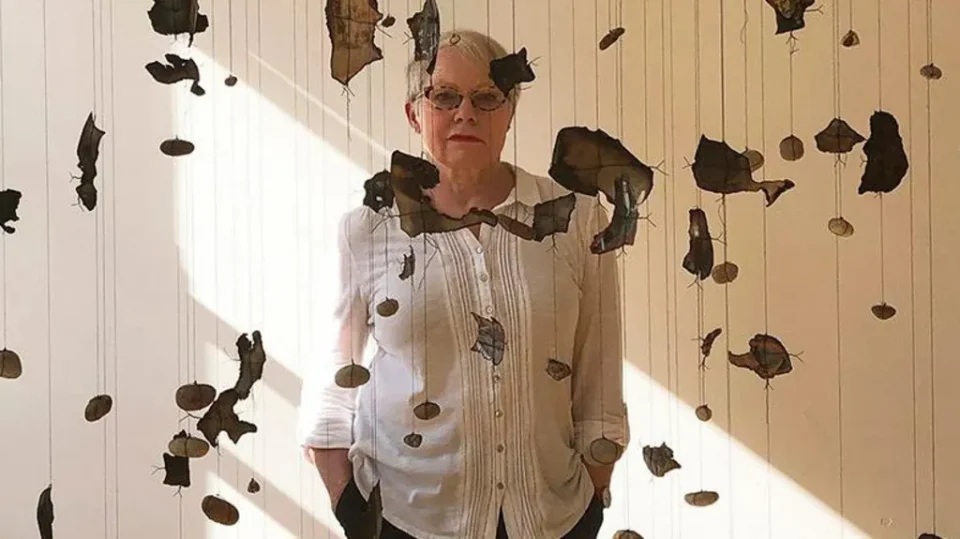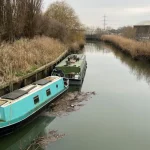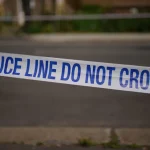Sara Davidmann always knew that her father, Manfred, had immigrated to Britain at the age of 14, having escaped from Nazi Germany. Yet, the details of his early life as a Jewish boy in Berlin, before he and his 17-year-old sister Susi fled on the Kindertransport in 1939, remained largely unknown to her.
“My father found it impossible to discuss his experiences,” explains the artist, who resides in London. “He was quite a complex person, making it challenging to connect with him… That era of his life was something he chose to keep to himself.”
After her father’s passing a decade ago, Sara embarked on a quest to uncover the truth about her dad’s past.
“We all sensed there was more to the story, but we never knew what it was, and it felt inappropriate to pry into it,” she admits.
The pivotal moment in her research came with the discovery of a family photo album compiled over decades by her late aunt Susi, containing images from 1910 to 1988.
“This album was a revelation; it included a plethora of family members in Germany, many of whom lived in Berlin, of whom I had never heard before,” she shares.
Yet, alongside joyful scenes of family gatherings and vacations, the album hinted at a darker history, as Sara noted that many individuals captured before the war were absent later in the collection.
Eager to learn more, she visited the Wiener Holocaust Library in Bloomsbury and the Arolsen Archives in Germany, where researchers assisted her in uncovering over 130 historical documents related to her family.
These documents unraveled both heartbreaking and inspiring narratives about those who were missing from the photographs.
For instance, records indicated that her great-grandmother Dorothea and great-aunt Marta were transported to Auschwitz and Theresienstadt, with neither ever being accounted for again.
“Holding documents that were once in the hands of those who orchestrated their deportation and deaths was profoundly chilling,” the artist reflects.
In contrast, some relatives undertook extraordinary journeys to survive the Holocaust.
“My great-aunt Rosa, whom I wish I could have met, managed to flee to France, was imprisoned in two camps yet ultimately escaped.”
Additional relatives found refuge in places like Shanghai, China, and Israel, while her grandmother Paulina survived the war by hiding in Berlin under assumed identities, Sara explains.
With none of these family members remaining to share their stories, Sara sought to understand the experiences of Jewish individuals in Germany after Adolf Hitler rose to power—a topic she had previously avoided due to her father’s silence.
“I learned that from 1933 onwards, over 400 antisemitic laws were enacted, systematically stripping Jews in Berlin of their rights and freedoms,” she recounts.
“This research provided me with profound insights into what my father encountered growing up as a Jewish boy and offered glimpses into the lives and experiences of other relatives.”
Simultaneously, as she delved into this history, Sara began producing artworks that reflected her reactions to the tragic fate of her fractured family.
She describes these works as “quite visceral,” often incorporating materials like hair, blood, and burned fabric to symbolize the impact of the antisemitic measures imposed by the Nazis.
One piece, titled My Name is Sara, features a series of photograms showcasing a plait of her own hair, which had been cut off during her childhood.
She explains that the title is inspired not only by her own name but also by a Nazi law that mandated Jewish individuals in Germany to adopt additional names—Israel for men and Sara for women—similar to what was imposed upon her relatives Marta and Dorothea.
Another creation consists of light boxes displaying microscopic blood samples from her living family members, which have been tinted red and green.
Sara reveals that this work originated as a response to the Nuremberg race laws, which stripped German Jews of their citizenship and forbade intermarriage between Jews and Germans for fear “that Jewish blood would contaminate the pure German race.”
Thus, the light boxes serve as her bold declaration of survival and resilience, demonstrating the endurance of her family, she notes.
These artworks culminated in an exhibition at the Four Corners Gallery in Bethnal Green in 2021, along with the publication of a book titled Mischling 1.
To commemorate Holocaust Memorial Day this year, Sara will participate in a discussion at the Wiener Holocaust Library, where she will share insights about her family and her artistic journey.
She expresses that exploring her family’s Holocaust experiences “has forged a connection to this history and to my father.”
Moreover, she believes it is crucial to discuss these events and recognize Holocaust Memorial Day, which serves to honor the millions who lost their lives under Nazi persecution, as well as other recent genocides in places like Cambodia and Rwanda.
“During my visits to various Holocaust museums and memorials worldwide, I often encountered the phrase ‘never again’ inscribed on walls or referenced in materials,” Sara remarks.
“It truly underscores the significance of this day.”


